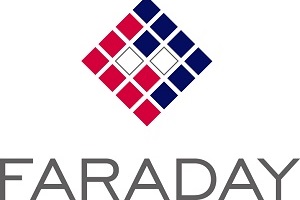Faraday adds QuickLogic eFPGA to FlashKit‑22RRAM SoC for IoT Edge

QuickLogic Corporation, a developer of embedded FPGA (eFPGA) Hard IP and user tools, ruggedised FPGAs, and endpoint artificial intelligence (AI)/machine learning (ML) solutions, has announced that its eFPGA IP is now integrated into Faraday Technology Corporation‘s cutting-edge FlashKit-22RRAM SoC Development Platform. The collaboration gives designers flexibility and adaptability to address a broad range of Internet of Things (IoT) applications.
Faraday’s FlashKit-22RRAM platform is an energy-efficient SoC platform implemented on UMC’s 22ULP process technology, supporting both Arm Cortex-M7 and the VeeR EH1 RISC-V processors. It features multiple systems, analogue and interface blocks as well as eNVM and the QuickLogic eFPGA IP for post-tape-out customisation. The FlashKit platform series is tailored for system companies designing AIoT, consumer and industrial applications, where integration and performance efficiency is required. The SoC in the FlashKit platform includes all the building blocks IoT system developers would use in their own SoC. Furthermore, the FlashKit platform enables users to make architectural tradeoffs between functions implemented on different subsystems – from software on processors to RTL on eFPGA to hard logic.
With the inclusion of QuickLogic’s well-established and silicon-proven eFPGA technology, FlashKit now enables customers to adapt hardware functionality post-silicon, reducing time-to-market while extending product lifecycles through field upgradability.
“Integrating QuickLogic’s eFPGA into our FlashKit platform brings substantial value to customers in need of adaptable, future-ready SoCs for the rapidly evolving IoT market,” said Barry Lai, the director of platform-based SoC development at Faraday. “This collaboration significantly enhances the configurability of our silicon platform while enabling cost-effective customisation at the edge.”
QuickLogic’s eFPGA IP offers a scalable architecture and is built on open-source toolchains, empowering developers with a high degree of design freedom. The addition of this reconfigurable logic within the FlashKit platform lets Faraday customers optimise power, performance, and area (PPA) for their unique workloads — an essential advantage for edge AI and real-time sensor fusion applications.
“Our partnership with Faraday highlights the growing need for customisable compute at the edge,” said Mao Wang, Sr. Director of Product Management of QuickLogic Corporation. “Integrating our eFPGA technology into FlashKit gives designers post‑deployment hardware flexibility and a clear path to differentiation across diverse IoT applications.”
For more information about QuickLogic’s eFPGA IP, visit www.quicklogic.com. To learn more about Faraday’s FlashKit platform, visit www.faraday-tech.com.
Comment on this article below or via X: @IoTGN and visit our website IoT Global Network
